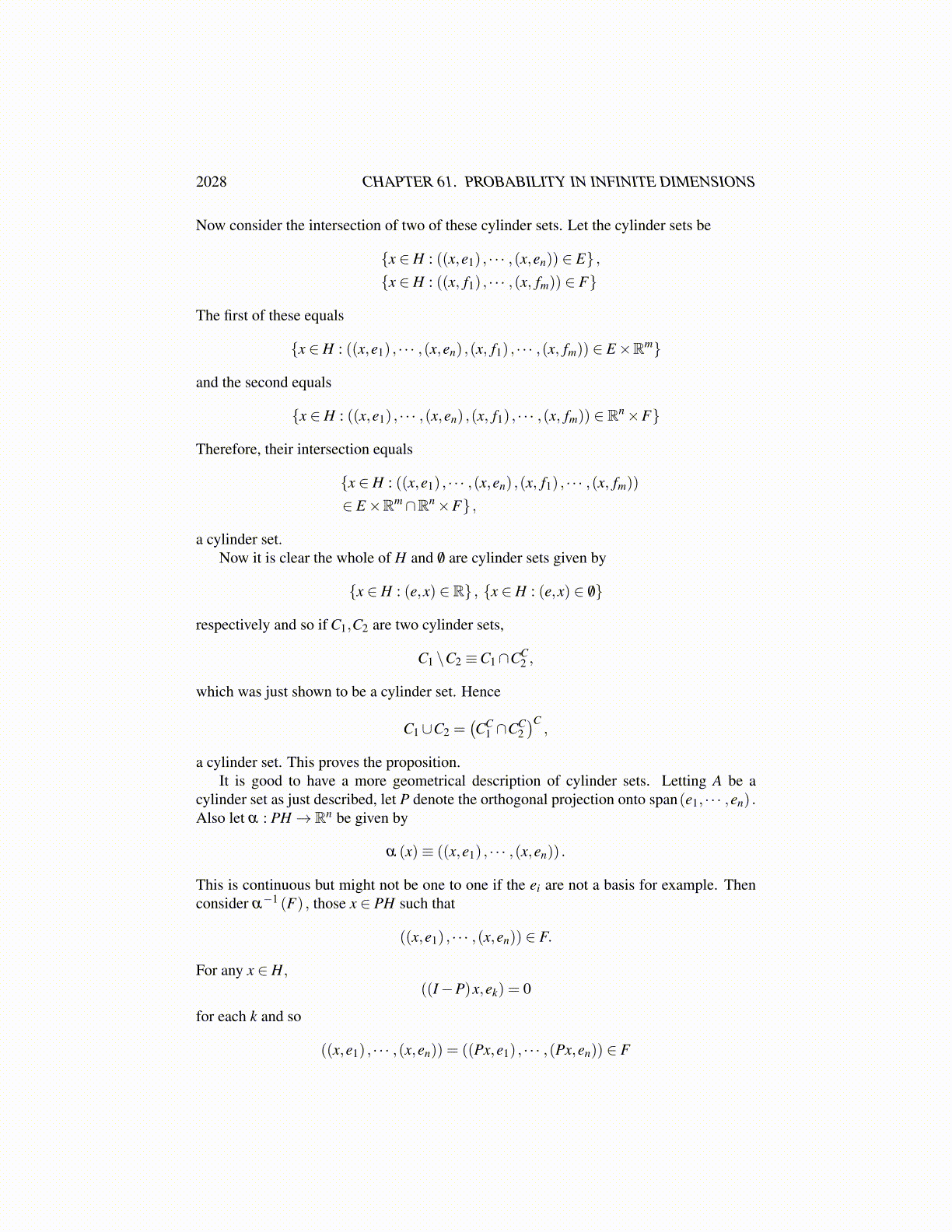
2028 CHAPTER 61. PROBABILITY IN INFINITE DIMENSIONS
Proof: By Lemma 61.8.2 which comes from Kolmogorov’s extension theorem, thereexists a probability space (Ω,F ,P) and a sequence {ξ i} of independent random variableswhich are normally distributed with mean 0 and variance 1. Then let
X (ω)≡ m+∞
∑j=1
√λ jξ j (ω)e j
where the{
e j}
are the eigenvectors of Q such that Qe j = λ je j. The series in the aboveconverges in L2 (Ω;U) because∣∣∣∣∣
∣∣∣∣∣ n
∑j=m
√λ jξ je j
∣∣∣∣∣∣∣∣∣∣2
L2(Ω;U)
=∫
Ω
n
∑j=m
λ jξ2j (ω)dP =
n
∑j=m
λ j
and so the partial sums form a Cauchy sequence in L2 (Ω;U).Now if h ∈U, I need to show that ω → (X (ω) ,h) is normally distributed. From this it
will follow that L (X) is Gaussian. A subsequence{m+
nk
∑j=1
√λ jξ j (ω)e j
}≡{
Snk (ω)}
of the above sequence converges pointwise a.e. to X .
E (exp(it (X ,h)))
= limk→∞
E(exp(it(Snk ,h
)))= exp(it (m,h)) lim
k→∞E
(exp
(it
nk
∑j=1
√λ jξ j (ω)(e j,h)
))Since the ξ j are independent,
= exp(it (m,h)) limk→∞
nk
∏j=1
E(
exp(
it√
λ j (e j,h))
ξ j
)
= exp(it (m,h)) limk→∞
nk
∏j=1
e−12 t2λ j(e j ,h)
2
= exp(it (m,h)) limk→∞
exp
(−1
2t2
nk
∑j=1
λ j (e j,h)2
). (61.8.40)
Now
(Qh,h) =
(Q
∞
∑k=1
(ek,h)ek,∞
∑j=1
(e j,h)e j
)
=
(∞
∑k=1
(ek,h)λ kek,∞
∑j=1
(e j,h)e j
)
=∞
∑j=1
λ j (e j,h)2